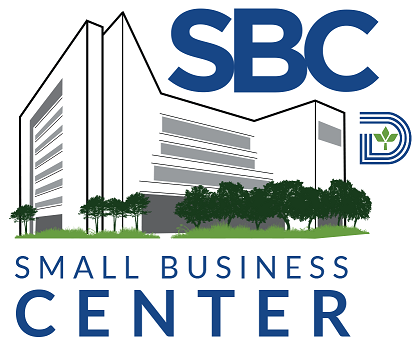Second in a series on Dallas B.R.A.I.N. operations.
Last time we reviewed how Dallas Public Library and Dallas Economic Development partnered to create the Dallas B.R.A.I.N. as the City’s brand for entrepreneurship literacy and local business development. Today we will introduce our in-person client intake, assessment and referral process. This is one of our most important contributions to the local business ecosystem. Clients can reach the Dallas B.R.A.I.N. by phone, email or during our office hours at the various public library branches. Sometimes a client only needs a quick reference and email or phone are adequate ways to give that support. In many cases, however a face-to-face encounter is the most efficient and effective way to help clients find the resource they need.
Why Meet One-on-One
Face-to-face encounters are important for several reasons. They give an opportunity to understand client needs and make more precise referrals because we can clarify where the client is and what they want to do next. They generate trust and goodwill especially with communities or industries that are historically underserved. We can also manage client expectations, which typically include misinformed notions about things like free government money to start a business. One-on-one encounters are a great marketing tool. We can educate clients on our mission and vision so they can spread the word in their circles. Finally, these meetings are the foundation for measuring our impact and the impact of our partner organizations on local business success.
Our Client Intake, Assessment and Referrals
How does the in-person process work? Dallas B.R.A.I.N. staff hold office hours at the downtown library every Thursday afternoon from 4 to 7. We also gradually extending these office hours to neighborhood library branches. Clients can reserve a thirty-minute session, but we accommodate walk-ins during other hours when possible. Our session is designed to clarify the client’s situation, assess their understanding of the next appropriate steps and to educate them on resources that might help them advance their goals. We start by clarify each other’s roles. Our brand promise is to help clients “identify the best next step in being an entrepreneur and recommend the information and resources you need to take that step.” They are responsible for choosing how they respond to our recommendations and for following up to secure appointments with the partners we recommend. We don’t do introductions directly to our partners. It is up to the client to take action if they wish.
Giving Structure to the Conversation
To help structure the session and facilitate follow up on both sides, we designed two session instruments. The new client sheet given to clients at the beginning of the session spells out our brand promise. It allows the client to document the place, date and time of the session, who they met with, what their goal was and what Dallas B.R.A.I.N. staff recommended. We also give them a two-week follow up date to record on their sheet. On our side of the transaction we use our referral form. It becomes the basis for the client’s entire account and records contact information, business status (concept, startup, existing business), client goals and recommended resources or partners for the client. The referral form allows us to summarize broad community resource needs and identify gaps in ecosystem services. Finally, the instrument helps schedule and record feedback in the form of a two-week follow up and a six-month outcome follow up.
Follow Up
The two-week check is to learn whether the client met with a partner and to document their experience with the partner. We also guage client satisfaction with our service during the two-week call. The six-month follow up is to determine if the client was successful in accomplishing their goals – did they start their business, did they turn around their problem, did they hire, lease space or increase sales. Though, we are not trying to be paternalistic, when made aware of our follow-up process many clients voice a desire to complete their homework so they can report that to us. Whether this is really motivating them to follow through isn’t clear yet. We need more data.
This intake, assessment and referral process is our most important client-facing activity. We will keep updating and expanding website content and the on-line business referral tool (Resource Navigator). They are great 24/7 resources. At the end of the day, however, there is no substitute for a direct encounter with our clients. We both maximize our learning that way. Next time, we will talk about our partner engagement process – the way we cultivate an ecosystem full of resources to inform what we can recommend to clients.



